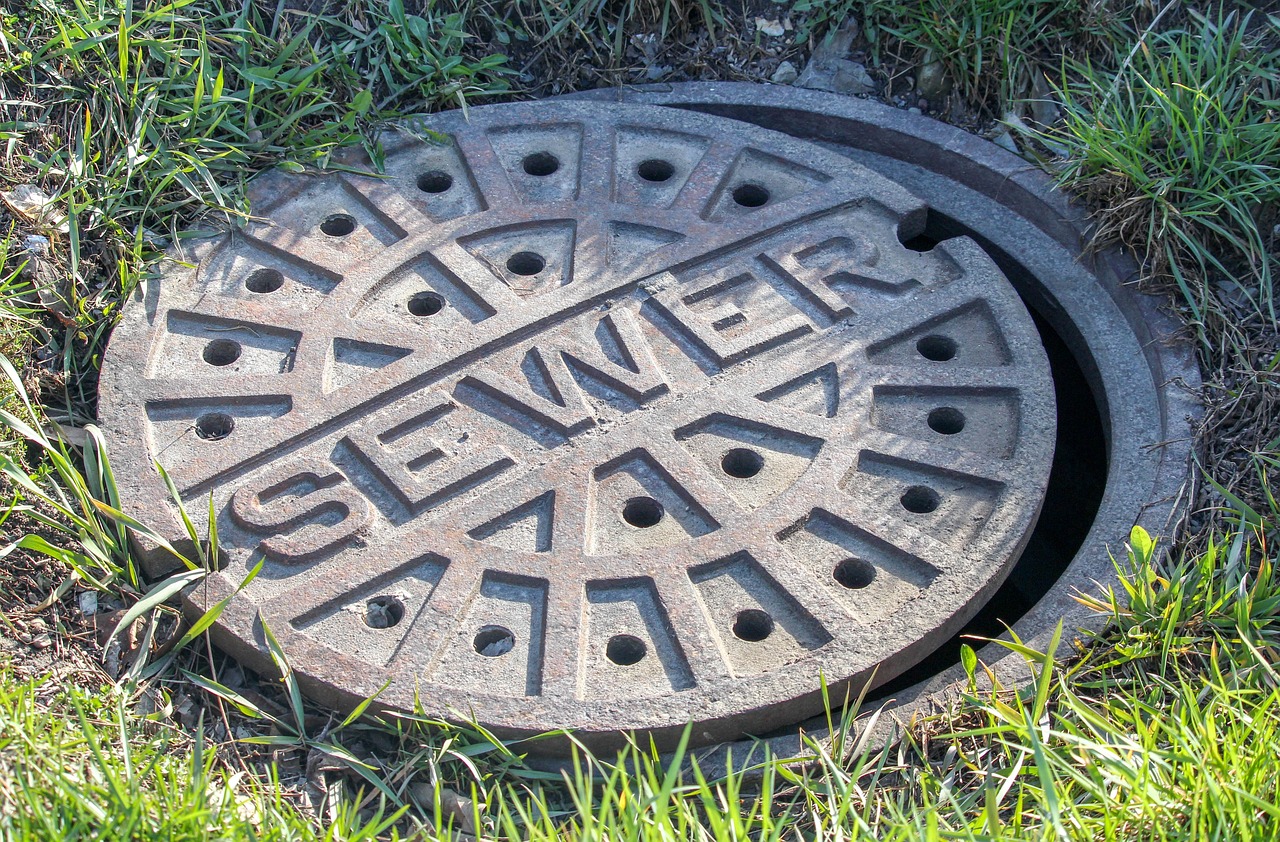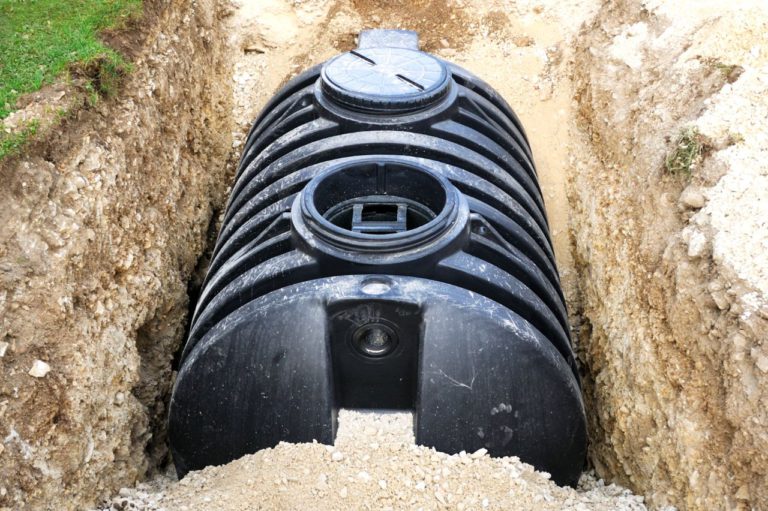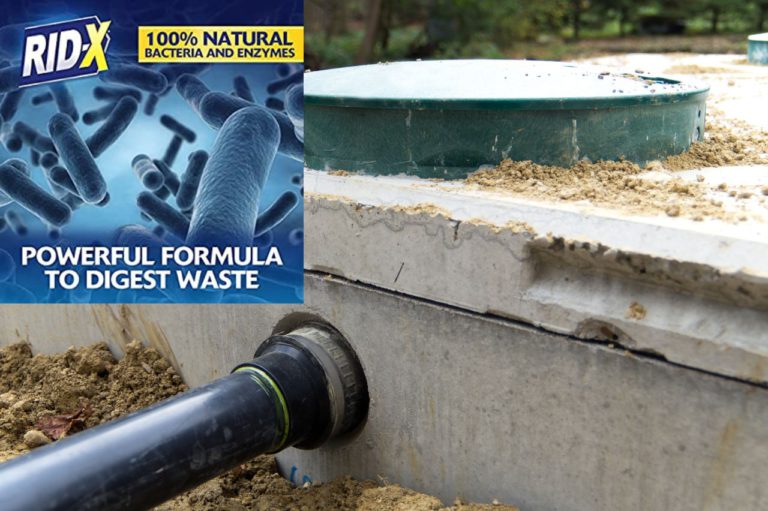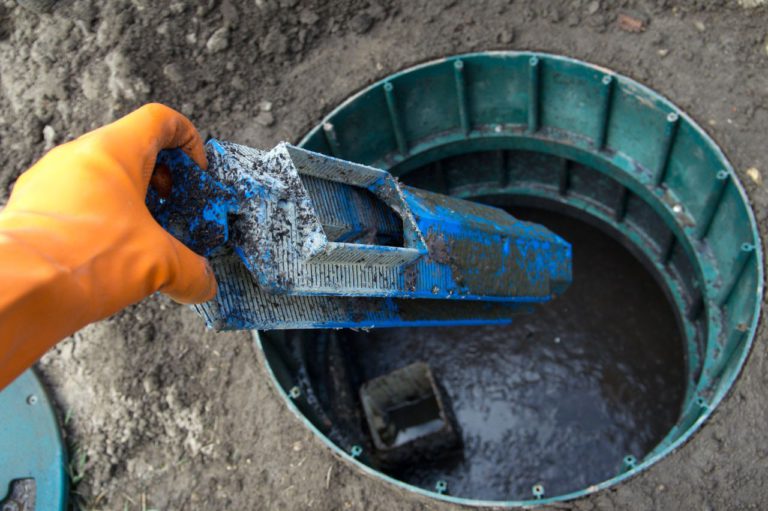Septic Tank Versus Sewer: Which Is Better for Your Home?
You may not give much thought to what happens to your wastewater once it leaves your home, but understanding how septic systems work is important for every homeowner. In this brief overview, we will explore the fundamentals of septic systems and compare them to public sewer systems. By gaining a basic understanding of these two options, you will be better equipped to make informed decisions about maintaining the health and functionality of your home’s wastewater management system.
What is a Septic System?
Definition of a septic system
A septic system is a self-contained wastewater treatment system that is commonly used in areas where there is no access to a public sewer system. It is designed to collect, treat, and dispose of household wastewater on-site.
Components of a septic system
A septic system typically consists of three main components: a septic tank, a distribution box, and a drainfield. The septic tank acts as a primary treatment unit where solids are separated from the wastewater. The distribution box distributes the treated effluent evenly to the drainfield, which is responsible for filtering and dispersing the wastewater into the soil for further treatment.
How Does a Septic System Work?
Basic principle of a septic system
The basic principle behind a septic system is the natural treatment of wastewater through a combination of physical, biological, and chemical processes. Once the wastewater enters the septic tank, the solid waste settles at the bottom as sludge, while the lighter materials float to the top as scum. The liquid portion, known as effluent, flows out of the tank and into the drainfield for further treatment.

Step-by-step breakdown of the process
- Wastewater enters the septic tank through an inlet pipe.
- Heavy solids settle at the bottom as sludge, while lighter materials float to the top as scum.
- Effluent, which is the liquid portion, flows out of the septic tank through an outlet pipe.
- The effluent is distributed evenly into the drainfield through a distribution box.
- In the drainfield, the effluent is filtered and treated as it percolates through layers of soil, which act as a natural filter.
- The treated wastewater is then dispersed into the surrounding soil, where further filtration and purification occur.
Advantages of Septic Systems
Independence from public sewer systems
One of the major advantages of having a septic system is the independence it provides from public sewer systems. Unlike those connected to a centralized sewer network, properties with septic systems are not reliant on external infrastructure, which means they can be located in more remote or rural areas.
Cost-effectiveness
Septic systems can be a cost-effective option for homeowners, as they eliminate the need for monthly sewer bills. The initial installation cost of a septic system may be higher, but the long-term savings can be significant, particularly for properties with low water usage.
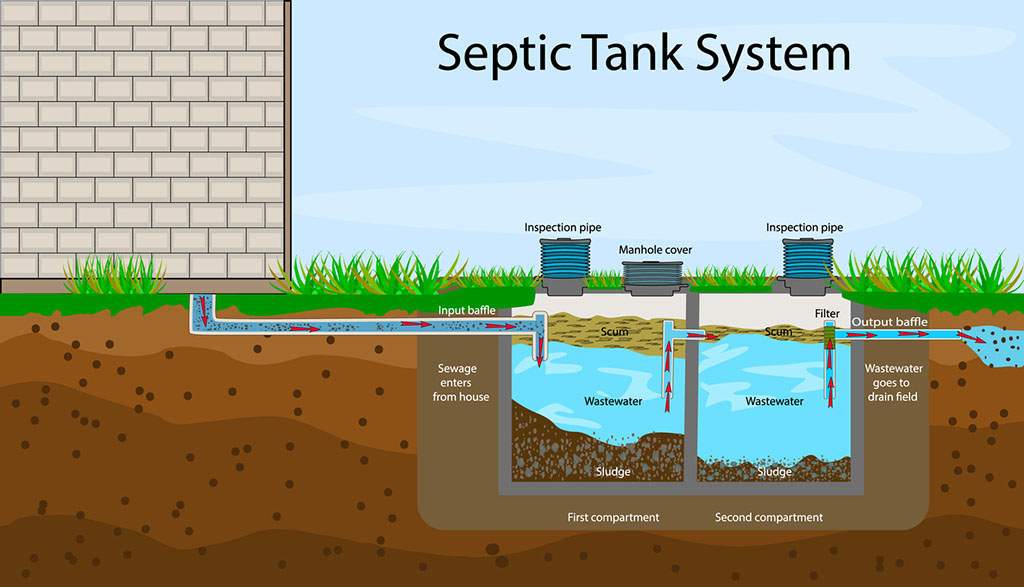
Lower environmental impact
Septic systems have a lower environmental impact compared to public sewer systems. The natural treatment processes that occur within a septic system help to remove pollutants from wastewater before it enters the groundwater or nearby bodies of water. Additionally, septic systems do not require extensive transportation and treatment infrastructure, reducing the energy consumption and carbon emissions associated with centralized sewer systems.
Limitations of Septic Systems
Soil suitability requirements
The successful operation of a septic system relies on suitable soil conditions. The soil must be able to effectively treat and absorb the wastewater that is discharged from the drainfield. Poor soil quality, such as high clay content or excessive rockiness, can impede the treatment process and may require alternative solutions or modifications to the septic system design.
Regular maintenance and inspections
Septic systems require regular maintenance and inspections to ensure their proper functioning. The septic tank needs to be pumped every few years to remove accumulated sludge and scum. Additionally, inspections are necessary to identify and resolve any potential issues before they lead to system failures or environmental contamination.
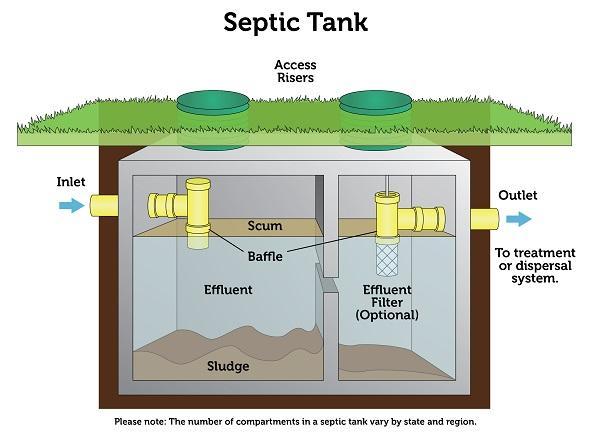
Impacted by weather conditions
Extreme weather conditions, such as heavy rains or flooding, can negatively impact the performance of a septic system. Excessive water can overload the drainfield, reducing its ability to effectively treat and absorb wastewater. It is important to monitor weather conditions and take appropriate measures to mitigate any potential risks or issues.
Design and Installation of Septic Systems
Site evaluation and soil testing
Before the installation of a septic system, a thorough site evaluation and soil testing should be conducted. This involves assessing the property’s size, soil characteristics, groundwater levels, and proximity to water sources. Soil testing helps determine the suitability of the soil for wastewater treatment and provides crucial information for designing an efficient and effective system.
Tank sizing and placement
The size of the septic tank is determined by factors such as the number of bedrooms in the house and the estimated daily water usage. Proper sizing ensures adequate storage capacity and allows for the settling and separation of solids within the tank. The placement of the tank should consider accessibility for maintenance and meet setback requirements from wells, property lines, and water sources.
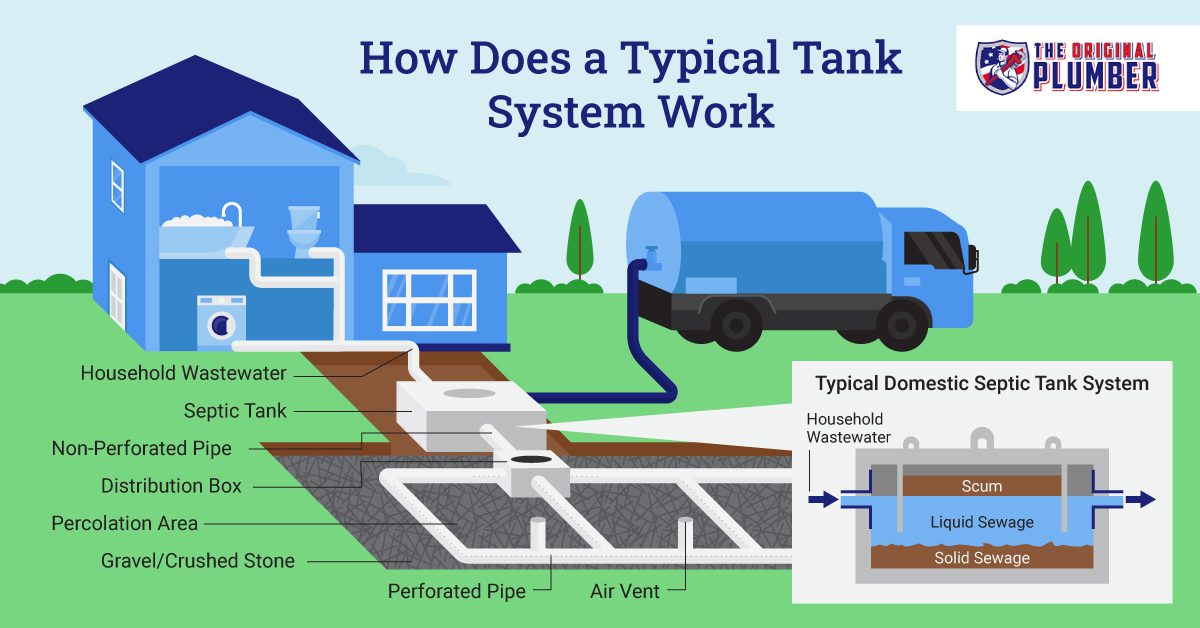
Distribution and absorption systems
The distribution system ensures that the effluent is evenly distributed to the drainfield for treatment. It typically consists of distribution pipes or a distribution box, which evenly disperses the effluent across the drainfield. The drainfield, also known as the leach field, consists of perforated pipes or trenches that allow the treated wastewater to percolate through the soil and undergo further filtration and purification.
Maintenance and Upkeep of Septic Systems
Regular pumping of the septic tank
Regular pumping is essential to remove accumulated solids from the septic tank. The frequency of pumping depends on factors such as tank size, household size, and water usage. On average, septic tanks should be pumped every 3 to 5 years, but professional advice should be sought to determine the specific pumping schedule for individual systems.
Proper waste disposal practices
Proper waste disposal practices are crucial to maintaining the functionality of a septic system. Avoid flushing non-biodegradable items, such as wipes, chemicals, or grease, down the drain, as they can clog the system or disrupt the natural treatment processes within the tank. Additionally, conserving water and spreading out heavy water usage, such as laundry, can prevent overloading of the system.
Monitoring and troubleshooting
Regular monitoring of the septic system is important to identify any signs of potential problems early on. This includes inspecting the drainfield for soggy or wet areas, checking for odors above the tank or drainfield, and monitoring the performance of drains and toilets. If any issues are detected, such as slow drainage or backups, immediate action should be taken to prevent further damage or system failure.
Signs of Septic System Problems
Odor and wet areas above the tank
If you notice foul odors in your yard or wet areas above the septic tank, it may indicate a problem with your septic system. These odors can be a result of a leaking tank or a malfunctioning drainfield. Wet areas above the tank could indicate a break or failure in the tank or distribution pipes.
Slow drainage and backups
Slow drainage in sinks, showers, or toilets is a common sign of a septic system problem. This can occur when the drainfield is overwhelmed or when the septic tank is in need of pumping. Backups or gurgling noises from drains should also be addressed promptly, as they indicate a blockage or failure in the system.
Unusual noises and septic alarm alerts
Unusual noises, such as bubbling or gurgling sounds coming from the drains, may indicate a septic system problem. Some septic systems are equipped with an alarm system that alerts homeowners to potential issues, such as high water levels in the tank. If you hear an alarm or notice any unusual noises, it is important to investigate and seek professional assistance if needed.
Repair and Replacement of Septic Systems
Identifying the source of the problem
When dealing with septic system issues, it is crucial to accurately identify the source of the problem. This can be done through inspections, testing, and professional assessment. Once the cause of the problem is determined, appropriate repairs or replacements can be undertaken.
Repairing minor issues
Minor issues with septic systems, such as clogs or leaks, can often be repaired without the need for full system replacement. Professional plumbers or septic system technicians can provide necessary repairs, such as patching sewer lines, fixing broken distribution pipes, or replacing damaged components.
Complete system replacement
In some cases, a complete system replacement may be necessary, especially if the existing system is beyond repair or no longer compliant with local regulations. This involves the removal of the old system and the installation of a new septic tank, distribution system, and drainfield. System replacement requires careful planning, design, and professional expertise.
Septic System Inspections and Regulations
Local inspection requirements
Many jurisdictions have specific requirements for septic system inspections. These inspections are typically conducted during the installation and prior to property transfers. They aim to ensure that septic systems are properly designed, installed, and functioning according to local regulations. Regular inspections may also be required to maintain compliance and check for any potential issues.
Compliance with environmental regulations
Septic systems must comply with environmental regulations to minimize their impact on groundwater and surface water quality. These regulations set standards for wastewater treatment, proper disposal, and protection of natural resources. Compliance typically involves adherence to setback distances from water sources, installation of required components, and following proper maintenance practices.
Potential legal consequences for non-compliance
Failure to comply with local septic system regulations can result in legal consequences. This can range from fines and penalties to forced system repairs or replacement. Non-compliant septic systems can pose health and environmental risks, making it crucial to understand and adhere to local regulations to avoid legal issues and protect the well-being of your community.
Comparison to Public Sewer Systems
Differences in costs and maintenance
Compared to public sewer systems, septic systems often require lower upfront costs, as they eliminate the need for connection fees and ongoing monthly service fees. However, septic systems do require regular maintenance, including tank pumping and inspections, which can be an additional expense compared to the fixed costs associated with public sewer services.
Environmental impact comparison
Septic systems are generally considered to have a lower environmental impact compared to public sewer systems. While both systems can effectively treat wastewater, septic systems operate on-site, reducing the need for large-scale infrastructure and energy consumption associated with centralized treatment facilities. Additionally, septic systems facilitate natural filtration and minimize the release of pollutants into water sources.
Availability and accessibility
Public sewer systems are typically more readily available in urban and densely populated areas, while septic systems are commonly found in rural or remote locations. The accessibility and feasibility of installing a septic system depend on various factors, including property size, soil conditions, local regulations, and proximity to public sewer connections. It is important to consider these factors when choosing between a septic system and a public sewer connection.
Closing Thoughts
In conclusion, septic systems offer a self-contained wastewater treatment solution for properties without access to public sewer systems. They provide various advantages, such as independence, cost-effectiveness, and lower environmental impact. However, they also come with limitations, including soil suitability requirements and regular maintenance needs. Proper design, installation, and maintenance are essential to ensure the optimal performance and longevity of septic systems. Understanding the signs of septic system problems, complying with regulations, and considering the differences between septic and public sewer systems can help homeowners make informed decisions about their wastewater management options.

